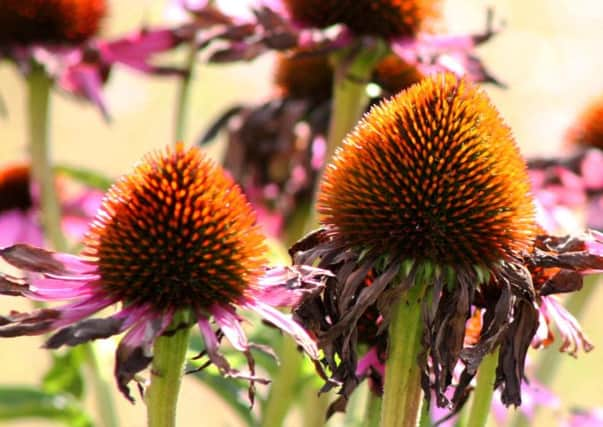An orange crush


Pick your variety, and you can get a mass of orange and sunshine-yellow daisies, beloved by bees and other insects.
There are about 40 species of helenium; many don’t like dry conditions while others will tolerate most soils. What they all seem to enjoy is sunshine.
Advertisement
Hide AdAdvertisement
Hide AdIdeally, give them a moisture-retentive soil and dead-head regularly to encourage more blooms. Every three years or so, lift the clumps of flowers and split them – replant in decent soil and you’ll have even more bits of brilliant colour to enjoy through late summer and into early autumn.
Another eye-catching flower (although not quite as vivid as helenium) worthy of consideration is echinacea (coneflower); this family may not be as vivid as helenium but they are not dissimilar in shape, and they are equally attractive to insects. They flower late in the year and are ideal grown in good-sized groups in borders.
There are nine species of echinacea, but the flowers with which we are most familiar come from the species E purpurea. Given rich soil, plants can reach a height of four feet. In most varieties, the petals droop after growing outward from the cone.
Coneflowers enjoy a sunny spot with a fertile soil. If your soil isn’t particularly fertile, work in a little compost and supplement with a good organic fertiliser. Well-drained soil is a must. In damp areas, you might need to plant in a raised bed to help control the drainage.
Advertisement
Hide AdAdvertisement
Hide AdEchinacea plants are available in most nurseries and garden centres, but they can be a bit pricey. Luckily, they are easy to grow from seeds.
Plant echinacea seeds in early spring, as soon as the soil can be worked, and when you still expect another frost or two. When an inch tall, thin them to 18ins apart.
Regular weeding is a must because coneflowers don’t compete well; other than that, plants require very little care. Expect blooms from June to October in most areas.
Echinacea are good about self-seeding as long as you leave a few of the last flowers to dry naturally. You can also harvest seeds for next year or lift and divide older plants in spring. So, this month is ideal.